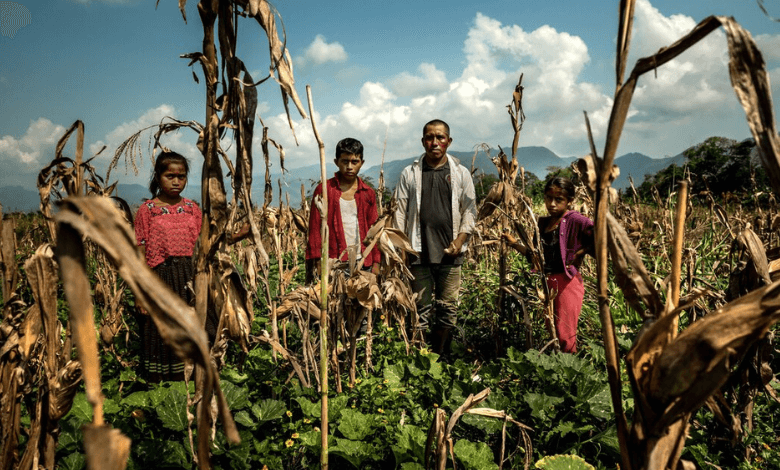Small Farmers, Big Storms: Climate Challenges Unveil Disparities

As the frequency and intensity of extreme weather events continue to escalate, the agricultural landscape is experiencing profound shifts. A recent exploration into the impact of extreme weather on farmers reveals a stark reality: those with smaller farming operations often find themselves disproportionately affected, grappling with the consequences of a changing climate.
The Toll of Extreme Weather on Agriculture
Extreme weather events, from tornadoes to floods, are becoming increasingly prevalent, leaving a trail of challenges in their wake. The agricultural sector, serving as the backbone of global food production, is particularly vulnerable to the disruptive forces unleashed by climate change. However, a closer look at the repercussions highlights a concerning trend: small-scale farmers are disproportionately burdened by the fallout of extreme weather.
Vulnerability of Small-Scale Farming Operations
Smaller farming operations face unique vulnerabilities that amplify the impact of extreme weather events. Limited resources, both financial and technological, leave these farmers with fewer avenues to implement resilient strategies and mitigate the consequences of unpredictable weather patterns. From crop losses to infrastructure damage, the toll on small-scale farmers reverberates through their livelihoods and communities.The aftermath of extreme weather events often translates into a severe financial strain for small-scale farmers. With limited access to insurance and recovery assistance, these farmers shoulder a disproportionate burden of economic losses. The road to recovery becomes a challenging journey, further underscoring the need for targeted support mechanisms to bolster the resilience of small-scale farming communities.
Read More: Arctic Thaw: Ancient Permafrost, Modern Worries
Climate Change and Adaptation Imperatives
Climate change, recognized as a driving force behind the surge in extreme weather events, necessitates urgent adaptation measures within the agricultural sector. While larger agribusinesses may possess the resources to invest in climate-resilient technologies and infrastructure, small-scale farmers face barriers that impede their ability to adapt effectively. Bridging this gap requires a holistic approach that considers the unique challenges of smaller farming operations.
In the face of mounting challenges, fostering community resilience becomes a linchpin for small-scale farmers. Collective action, community-based initiatives, and support networks can play a pivotal role in enhancing the adaptive capacity of these farmers. By sharing knowledge, resources, and experiences, communities can build a collaborative front against the onslaught of extreme weather.
Policy interventions at local, regional, and national levels are imperative to ensure equitable resilience within the agricultural sector. Tailored financial support, access to climate information, and incentives for sustainable practices can empower small-scale farmers to navigate the complexities of a changing climate. Proactive policies that prioritize inclusivity can catalyze building a more resilient and sustainable agricultural landscape.
Conclusion: Nurturing a Resilient Agricultural Future
As extreme weather events continue to shape the landscape of global agriculture, acknowledging and addressing the vulnerabilities of small-scale farmers becomes paramount. Nurturing a resilient future requires a collective commitment to dismantling barriers, implementing inclusive policies, and fostering community-driven solutions. By recognizing the unique challenges faced by small-scale farmers and working collaboratively to overcome them, we can pave the way for a more sustainable and equitable agricultural future.



